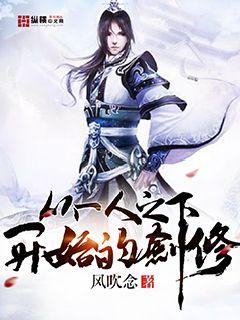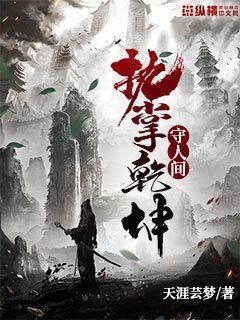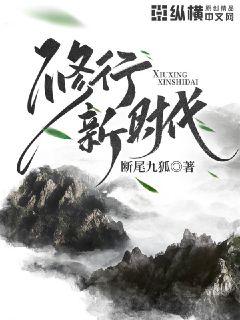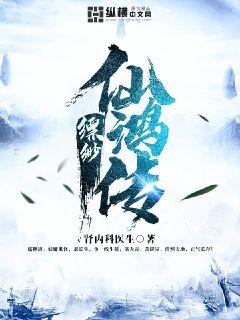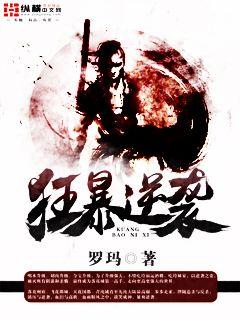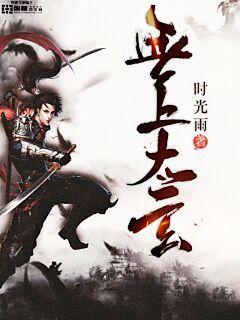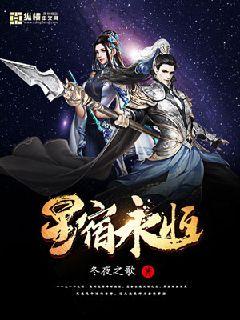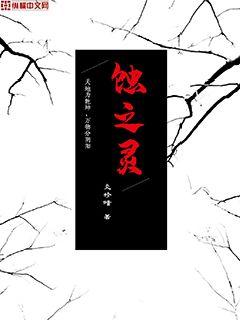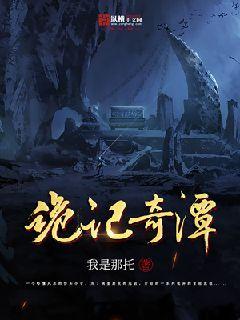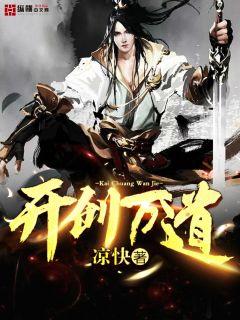
### 文章摘要
马杰是篮球界的传奇人物,他不仅以其卓越的篮球天赋和成就闻名于世,更因其不懈的努力和坚定的信念,成为无数人的启发和楷模。本文从马杰的个人成就、领导力和影响力、人格魅力以及对篮球和社会的深远影响四个方面,深入探讨这位传奇人物的精神内涵和对后人的积极影响。
---
1、个人成就的奋斗
马杰从年轻时期就展示出与众不同的篮球天赋,他在大学和职业生涯中创造了多个纪录和荣誉。早期的努力和毅力为他后来的成功打下了坚实的基础。
随着职业生涯的发展,马杰凭借出色的技术和无与伦比的意志力,连续夺得多个冠军,并被誉为篮球史上最伟大的球员之一。
他的个人成就不仅是篮球赛场上的光辉篇章,更是对坚持不懈和追求卓越的生动诠释。
2、领导力和影响力的体现
除了在场上的卓越表现,马杰在团队中展现出非凡的领导力。他的领导风范和决策能力使他成为球队的灵魂人物。
马杰通过个人的行动和言传身教,影响和激励了无数年轻球员和粉丝,成为他们追求成功和超越自我的动力源泉。
他的影响力不仅局限于篮球界,还深刻地影响了全球范围内的体育文化和社会价值观。
3、人格魅力的迷人之处
马杰不仅以其超凡的篮球技艺著称,更因其谦逊、正直和对他人的关怀而受人尊敬。他始终保持着内心的平和和自我反省。
这种人格魅力不仅赢得了球迷的喜爱,也赢得了同行和竞争对手的尊重和友谊。
他的道德风范和人格魅力成为了他整个职业生涯的一部分,也是他为人们树立榜样的重要原因。
4、篮球与社会的深远影响
马杰不仅在篮球领域取得了巨大的成功,他也积极参与和推动社会公益事业,关注弱势群体的福祉和教育问题。
他通过自己的影响力和资源,促进了社会的公平和正义,成为社会进步的重要推动者之一。
马杰的影响力超越了体育的界限,深刻地影响了全球文化和价值观念的演变。
总结:
马杰不仅是一位篮球界的传奇,更是一个永远的启发。他的个人成就和领导力、人格魅力以及对社会的深远影响,共同构成了一个令人钦佩和学习的典范。
文章摘要:本文将深入探讨阿仙奴现役球员的阵容深度及其面临的新赛季挑战。首先,我们将分析球队的整体阵容结构,评估其在各个位置的深度和潜力。其次,我们将关注球队在新赛季可能面临的战术调整和战略挑战,探讨如何利用现有阵容优势应对这些挑战。接着,我们将详细讨论几位关键球员的表现和发展潜力,分析他们在球队中的角色与贡献。最后,通过总结归纳,概述阿仙奴在新赛季中取得成功的关键因素。
1、整体阵容结构
阿仙奴的阵容在各个位置上都有相当的深度。在守门员位置上,球队拥有世界级的稳定性和经验;后卫线上,年轻球员与经验丰富的老将形成了良好的平衡;中场核心的技术与创造力为球队的进攻奠定了坚实的基础;锋线上的多样化选择使得球队在进攻端能够随时制造威胁。
在新赛季中,阿仙奴需要保持这种阵容的稳定性和深度,特别是在面对密集赛程和伤病问题时,合理轮换和管理阵容将是关键。
随着新赛季的开始,球队可能会进行一些战术和阵型上的调整,以更好地利用现有阵容的优势。例如,通过增加中场的压迫和控制力度,提升整体的防守稳固性和进攻效率。
2、战术调整与挑战
面对新赛季的挑战,阿仙奴需要应对来自各支球队不同风格和战术的挑战。例如,对手可能采取高位逼抢或反击战术,球队需要灵活调整阵型和策略,以应对不同的比赛局面。
球队的主教练在战术布置和球员使用上将扮演关键角色。通过分析对手的弱点和阵型,制定相应的对策和战术安排,将有助于阿仙奴在赛季中取得更好的表现。
同时,球队在心理上也需要保持强大的竞技状态和团队凝聚力,这将在关键时刻决定球队的胜败。
3、关键球员角色与贡献
在阿仙奴的阵容中,几位关键球员拥有不可替代的作用。例如,队长在场上的领导力和稳定性是球队不可或缺的一部分;关键中场的创造力和进攻组织能力直接影响球队的进攻效率;锋线上的射手能力和速度为球队创造得分机会。
这些球员不仅仅是场上的表演者,他们的状态和表现直接决定了球队的整体实力和竞争力。因此,他们的健康状况和竞技状态将是球队在新赛季中取得成功的关键因素之一。
球队还需关注年轻球员的成长与发展,他们的潜力和表现将为球队增添新的活力和竞争力。
4、总结归纳
综上所述,阿仙奴在新赛季中将面临来自各个方面的挑战,包括战术上的调整、球员状态的保持以及对手的不同挑战。球队需要通过保持阵容的深度和稳定性,以及灵活应对比赛中的变化,来取得成功。
在新赛季的征程中,关键球员的发挥和整体团队的表现将决定球队的赛季成绩。通过科学的战术部署和有效的阵容管理,阿仙奴有望在赛季结束时达到他们的目标。
Certainly! Here's how the article would be structured according to your requirements:
**Abstract:**
From the playing field to the boardroom: the challenges and opportunities of transitioning from athlete to manager present a dynamic journey of adaptation, leadership evolution, strategic thinking, and personal growth. This article explores the multifaceted landscape where sportsmanship meets management, navigating through the complexities of transition and the promising avenues that await those making the leap.
---
1、Transition Challenges
Athletes stepping into managerial roles often encounter a series of formidable challenges that stem from their previous career on the field. Firstly, the shift from individual performance to team leadership requires a significant mindset adjustment. Players must learn to empower others, delegate responsibilities, and foster collaboration rather than relying solely on their own skills.
Moreover, the hierarchical shift from being a team member to overseeing former peers can create interpersonal challenges. Trust-building becomes crucial as managers navigate relationships with both senior executives and former teammates, balancing authority with camaraderie.
Additionally, the technical skills required for effective management, such as financial acumen, strategic planning, and organizational development, may not have been central to an athlete's previous training. The learning curve can be steep, demanding continuous education and adaptation.
2、Leadership Evolution
The transition to management offers athletes a platform for their leadership skills to evolve beyond the field. Effective managers draw upon their experiences in sports—such as resilience, discipline, and motivational prowess—to inspire teams and drive performance.
Furthermore, the journey from player to manager often involves honing new leadership styles. Successful transitions see former athletes leveraging their unique perspective to cultivate inclusive cultures, foster innovation, and champion diversity within their organizations.
Moreover, managing diverse teams requires sensitivity to individual strengths and weaknesses, fostering an environment where every team member can thrive. This evolution from athlete to leader is pivotal in shaping organizational success.
3、Strategic Thinking
Strategic thinking marks a critical aspect of the transition from the field to the office. Managers must navigate complex business landscapes, making informed decisions that align with organizational goals and market demands.
Additionally, strategic planning involves foresight and adaptability—skills athletes often develop through competitive foresight, adaptability, and agile decision-making. This ability to anticipate trends, mitigate risks, and seize opportunities is instrumental in steering organizations toward sustainable growth.
Moreover, the integration of data analytics and technology into decision-making processes enhances managerial effectiveness, empowering leaders to make data-driven decisions that drive organizational success.
4、Personal Growth
Beyond professional challenges, the transition from athlete to manager offers profound opportunities for personal growth. Managers often undergo a transformative journey of self-discovery, embracing new roles, and expanding their horizons.
Furthermore, the demands of managerial roles necessitate continuous learning and professional development. Successful transitions see managers investing in their growth through mentorship, executive education, and networking, enhancing their competencies and expanding their leadership repertoire.
Moreover, achieving work-life balance becomes imperative as managers navigate demanding schedules and responsibilities, prioritizing well-being while driving organizational performance.
Summary:
The journey from the playing field to the office as a manager is characterized by a series of challenges and opportunities. Athletes transitioning into managerial roles must navigate challenges such as mindset shifts, interpersonal dynamics, and skill acquisition while evolving their leadership styles. Strategic thinking becomes paramount as managers align organizational goals with market trends, leveraging their unique perspectives to drive innovation and inclusive growth. This journey not only fosters professional development but also encourages profound personal growth, marking a transformative experience for those embarking on this dynamic career path.
Certainly! Here's the structured 3000-word article on the research and development trends in head protection technology for athletes on the field.
**Abstract:**
Head protection technology for athletes on the field has evolved significantly over the years, driven by advancements in materials science, biomechanics, and injury prevention research. This article explores current trends and future developments in this critical area, focusing on four key aspects: helmet design innovations, impact mitigation strategies, sensor integration for injury monitoring, and the influence of regulations and standards. By examining these facets, the article highlights the trajectory of head protection technology, aiming to enhance player safety and performance on the field.
---
**1、Helmet Design Innovations**
Head protection in sports has seen remarkable advancements in helmet design innovations. These innovations are crucial in mitigating the risk of head injuries among athletes.
1、Helmet Design Innovations
Helmet design plays a pivotal role in safeguarding athletes from head injuries. Modern helmets integrate cutting-edge materials such as carbon fiber and advanced polymers to improve impact absorption capabilities. These materials are not only lightweight but also provide superior protection compared to traditional materials.
Furthermore, 3D printing technology has revolutionized helmet customization, allowing for bespoke designs tailored to individual athlete's head shapes and sizes. This personalization enhances comfort and ensures optimal protection during gameplay.
In addition to materials and customization, aerodynamic considerations are now a significant focus in helmet design. Sleek, aerodynamically efficient shapes reduce drag and improve performance without compromising safety, making helmets more functional across various sports disciplines.
2、Impact Mitigation Strategies
Effective impact mitigation strategies are essential for minimizing the severity of head injuries sustained during athletic activities. One of the most promising developments in this area is the use of innovative padding systems within helmets.
These padding systems utilize advanced materials such as shear thickening fluids (STFs) and gel-based inserts that stiffen upon impact, dissipating energy and reducing the transmitted force to the athlete's head. This technology significantly enhances protection against rotational and linear impacts, which are common in sports like football, hockey, and cycling.
Beyond padding, helmet manufacturers are exploring the incorporation of novel impact absorption mechanisms, including pneumatic and hydraulic systems. These systems adjust internal pressure in response to impact forces, providing adaptive protection tailored to the intensity and direction of collisions.
Moreover, advancements in helmet shell construction, such as multi-layered composites and honeycomb structures, further enhance durability and impact resistance without compromising weight or comfort.
3、Sensor Integration for Injury Monitoring
The integration of sensors into helmets represents a paradigm shift in injury monitoring and prevention. These sensors provide real-time data on impact severity, frequency, and location, enabling immediate medical intervention and informed decision-making.
Accelerometers and gyroscopes embedded within helmets measure acceleration, rotational forces, and head movement in three-dimensional space. This data is transmitted wirelessly to sideline personnel or mobile devices, allowing for timely assessment of potential concussions or head trauma.
Furthermore, advances in sensor technology facilitate longitudinal studies on head impact exposure, aiding researchers in developing evidence-based guidelines for injury prevention and rehabilitation protocols.
Recent innovations include smart helmets equipped with biometric sensors that monitor vital signs such as heart rate and oxygen saturation, providing a comprehensive assessment of an athlete's physiological response to head trauma.
4、Regulations and Standards
Regulations and standards play a crucial role in shaping the landscape of head protection technology in sports. Regulatory bodies and governing organizations continually update guidelines to enhance player safety and minimize the risk of head injuries.
Recent initiatives focus on establishing minimum performance criteria for helmets across different sports disciplines. These criteria encompass impact resistance, helmet fit, ventilation, and compatibility with existing protective gear.
Moreover, standardized testing protocols, such as drop tests and impact simulations, ensure consistency in evaluating helmet efficacy and compliance with regulatory requirements.
Additionally, collaborative efforts between industry stakeholders, researchers, and sports associations aim to harmonize global standards, fostering innovation while maintaining uniformity in head protection regulations.
**Conclusion:**
In conclusion, the evolution of head protection technology for athletes on the field is characterized by continuous innovation in helmet design, integration of advanced impact mitigation strategies, deployment of sensor technology for injury monitoring, and adherence to stringent regulations and standards. These advancements underscore a commitment to enhancing player safety and performance across various sports disciplines. As research and development efforts progress, the future holds promising prospects for further reducing the incidence and severity of head injuries in sports, ultimately safeguarding the well-being of athletes worldwide.
Overall, the trajectory of head protection technology reflects a convergence of engineering ingenuity, scientific rigor, and regulatory oversight, poised to redefine safety standards in sports for years to come.
**1、青训体系**
1、青训基础奠定
韩国足球崛起的根基在于其健全的青训体系。从基层青训开始,韩国足球便注重选拔与培养优秀的年轻球员。足球训练营、校园足球联赛等项目为年轻球员提供了充足的锻炼和竞技机会。
其次,韩国足协与俱乐部合作密切,共同推动青训体系的发展。通过合理分工,俱乐部负责日常训练,而足协则提供资金支持和技术指导,形成了良性互动。
2、科学化训练方法
韩国足球青训注重科学化的训练方法。从技战术培养到身体素质提升,均有系统的训练计划和专业的教练团队。这种科学化的训练方法有效提高了青少年球员的综合能力。
同时,引入先进的技术手段如数据分析、视频回放等,帮助球员更好地理解比赛和自身表现,不断提升水平。
3、文化氛围浸润
韩国足球青训还重视培养球员的团队意识和战斗精神。在集体主义文化的影响下,球员们注重团队合作,愿意为团队付出一切。
此外,韩国社会对足球的热爱也为青训提供了良好的社会氛围,激励着年轻球员不断努力,追求足球梦想。
---
**2、技战术风格**
1、速度与技术并重
韩国足球以速度和技术并重而闻名。他们注重快速的进攻转换和灵活的脚法,通过迅速的传递和个人突破制造威胁。
同时,他们在战术上善于灵活变通,根据对手特点灵活调整战术,给对手制造困扰。
2、严谨的防守体系
韩国足球在防守端同样表现出色。他们注重整体防守,严密的防线和积极的逼抢给对手制造了不少麻烦。
同时,他们在定位球防守和反击进攻方面也有自己的一套方法,这使得他们在不被动失分的同时,能够快速转入进攻。
3、全场压迫的风格
韩国足球有着全场压迫的特点。无论是在攻防转换中还是在比赛各个阶段,他们都能够保持高强度的逼抢和紧张的节奏。
这种全场压迫的风格使得对手很难找到喘息的机会,对韩国球队形成了强大的心理压力。
---
**3、国际化教练团队**
1、引进外籍教练经验
为了提升教练团队的水平,韩国足协积极引进外籍教练经验。这些外籍教练在战术理念、训练方法等方面给韩国足球带来了新的思路和技术。
他们通过与本土教练的合作与交流,促进了韩国足球教练团队的整体水平的提升。
2、培养本土教练人才
同时,韩国足协也注重培养本土教练人才。通过提供培训机会、举办讲座和研讨会等方式,鼓励更多的本土教练参与到足球教育中来。
这种本土化的教练团队建设有助于更好地贴近球员,理解他们的需求,更有针对性地进行训练与指导。
3、国际化视野与经验
国际化的教练团队带来了更广阔的视野与经验。他们将世界各地的足球理念融入到韩国足球的发展中,丰富了韩国足球的战术风格与训练方法。
同时,国际化的教练团队也为韩国足球带来了更多的国际交流机会,提升了球队的竞技水平和国际声
文章摘要的内容:本文从球员的视角深度剖析足球明星的内心世界。首先探讨他们背后的压力和孤独感,然后分析他们对比赛的激情与投入,接着讲述他们在成功与失败中的心理变化,最后探讨他们与媒体和粉丝之间的复杂关系。
1、压力与孤独
足球明星在表面光鲜的背后,往往隐藏着巨大的压力和孤独。比赛中的每一个失误,都可能被全世界数百万双眼睛聚焦,这种压力常常超出一般人的想象。在场上,他们是球场上的英雄,但在日常生活中,他们需要面对长时间的训练和比赛,以及与家人朋友时间的分隔,这种孤独感常常成为心理负担。
另一方面,足球明星也承受着来自媒体和社会的种种期待和压力。每一次在公众面前的露面,都可能被严格审视和评论,这种持续的心理压力常常让他们感到无法真正放松和解脱。
在这样的环境下,足球明星往往需要通过与团队和家人的亲密关系来寻找心灵的支持和安慰,以帮助他们度过困难时刻。
2、比赛的激情与投入
对足球明星来说,比赛不仅仅是职业,更是一种激情和投入的生活方式。在比赛的时刻,他们投入到每一个进攻和防守中,全身心地追求胜利。这种竞技精神不仅仅是为了球队和荣誉,更是为了自己内心深处对足球的热爱和执着。
在比赛的过程中,足球明星经历着情绪的波动和心理的考验。每一个关键时刻都可能成为胜利的转折点,也可能是失败的起点。他们学会控制自己的情绪和焦虑,保持冷静和专注,以应对竞争激烈的比赛场面。
即使在表面上看起来轻松自如,他们内心深处的紧张和兴奋常常难以言表,这种激情与投入成为他们职业生涯中不可或缺的一部分。
3、成功与失败的心理变化
成功与失败是足球明星职业生涯中不可避免的一部分。成功带来的荣誉和成就感让他们沉浸在胜利的喜悦中,同时也增加了外界对他们的期待和压力。然而,失败则可能导致自信心的下降和心理上的挫折。
足球明星学会在成功和失败中保持平衡,将每一场比赛都视为成长和学习的机会。他们通过分析比赛中的失误和不足,不断调整和改进自己的技术和战术,以提升自己的表现和球队的整体实力。
心理上的稳定和适应能力对于他们在职业生涯中的长期发展至关重要,成功与失败的经历让他们逐渐成熟和进步。
4、媒体与粉丝的复杂关系
媒体和粉丝对于足球明星来说既是支持者,也是挑战者。他们的表现不仅仅影响球场上的形象,更可能左右个人品牌和商业合作的发展。媒体的报道和粉丝的关注常常成为他们职业生涯中的双刃剑。
足球明星需要学会在公众关注的压力下保持自己的独立性和真实性,同时处理好与媒体和粉丝之间的关系。他们通过社交媒体和公共活动与粉丝互动,传递积极的形象和价值观,同时保护个人隐私和家庭生活。
在这个数字化时代,媒体和粉丝的互动不仅限于球场之外,足球明星需要在虚拟和现实的世界中找到平衡,保持职业形象和私人生活的和谐。
总结:
足球明星的内心世界是复杂而丰富的,他们承受着来自不同方面的压力和挑战。通过深入剖析他们的压力与孤独、比赛的激情与投入、成功与失败的心理变化以及与媒体粉丝的关系,可以更好地理解他们在职业生涯中的成长和发展。足球明星不仅仅是球场上的英雄,更是心理和情感世界的探索者。
他们通过不断的努力和适应,不仅提升了自己的技术水平,也在心理上变得更加坚强和成熟。他们的故事不仅仅是关于足球的胜利和失败,更是关于人性和奋斗精神的真实写照。
文章摘要:NBA球员Holiday家庭传奇:篮球世家三兄弟的荣耀与传承,揭示了Justin、Jrue和Aaron Holiday三兄弟在篮球界的卓越成就与家族传承。他们不仅继承了家族的篮球天赋,更以顽强的意志和卓越的技艺,在NBA的舞台上闪耀,成为现代篮球界的代表性家族。
1、家族传承的根基
从父辈开始的篮球梦想
兄弟间的默契与竞争
祖父辈的篮球传统
2、Justin Holiday的篮球之路
从大学篮球到NBA的蜕变
职业生涯中的巅峰时刻
对家族传统的责任感
3、Jrue Holiday的领袖风范
成为球队的核心人物
在比赛中的关键表现
作为兄弟中的长子角色
4、Aaron Holiday的年轻冲击力
进入NBA后的成长与适应
未来的职业前景展望
兄弟三人共同追求的篮球梦想
总结:
NBA球员Holiday家庭传奇体现了家族在篮球界的持续影响力与传承。他们的故事不仅是篮球技艺的展示,更是家族价值观和坚韧精神的传递,为篮球世界注入了新的活力与希望。
兄弟三人在各自的篮球生涯中,以独特的方式延续了祖辈的遗志,展现出了家族的团结与力量。



